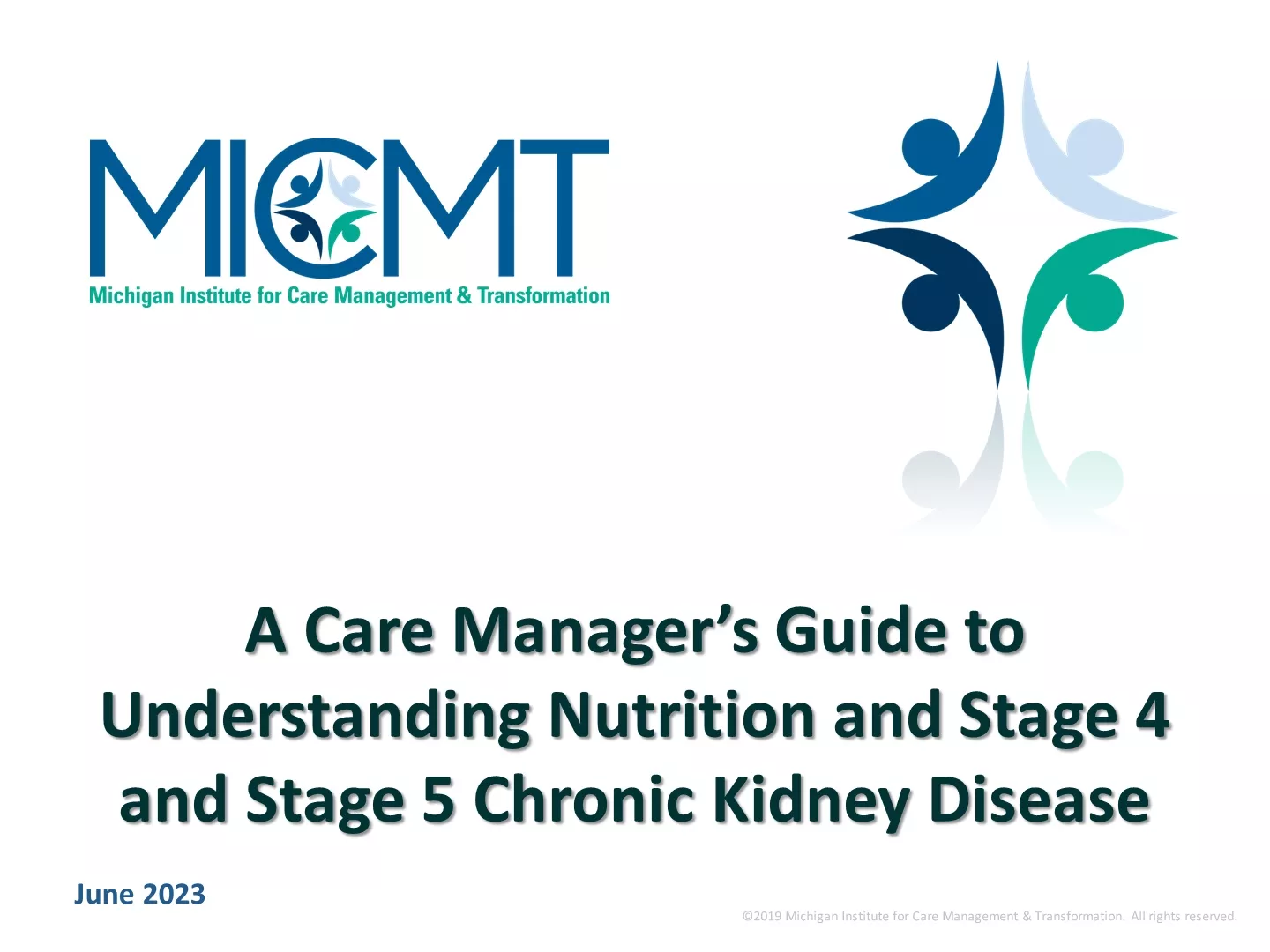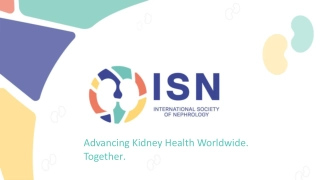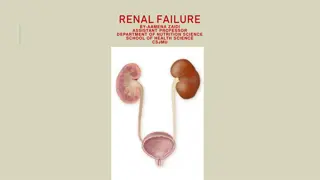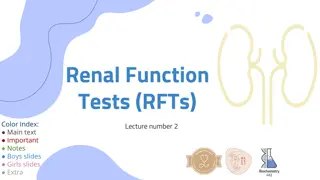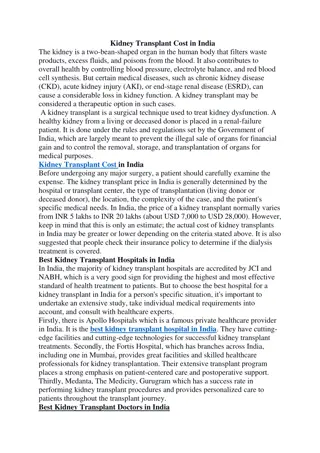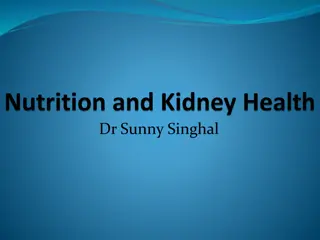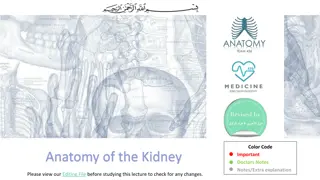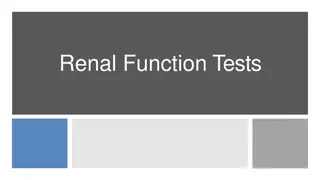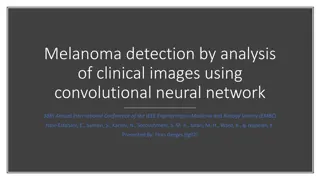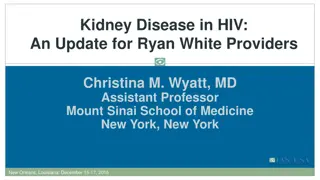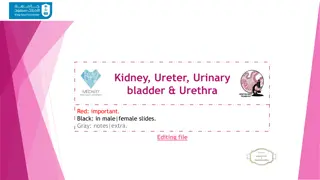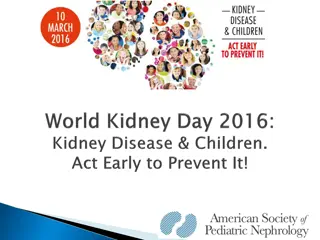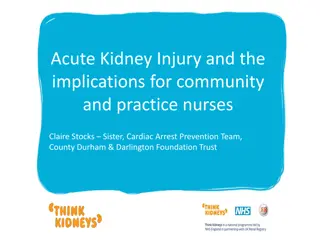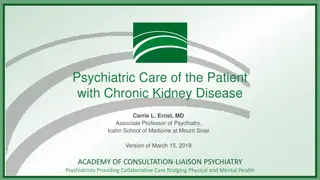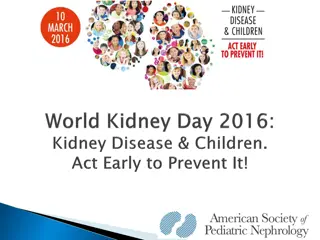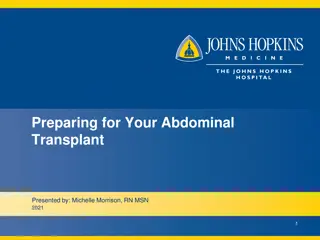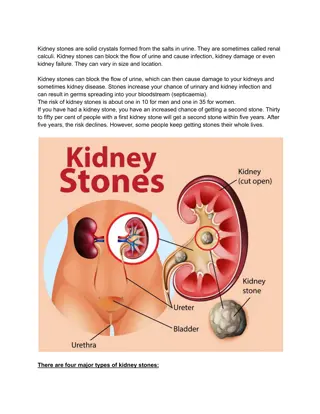Kidney Disease in Children: Early Detection and Prevention
Kidney disease affects millions globally, including children at risk from an early age. Encouraging education, early detection, and a healthy lifestyle is crucial to combat this trend. The provided content emphasizes the significance of addressing preventable kidney diseases in children, highlighting the necessity of raising awareness and promoting proactive measures for the well-being of young individuals.
Download Presentation

Please find below an Image/Link to download the presentation.
The content on the website is provided AS IS for your information and personal use only. It may not be sold, licensed, or shared on other websites without obtaining consent from the author.If you encounter any issues during the download, it is possible that the publisher has removed the file from their server.
You are allowed to download the files provided on this website for personal or commercial use, subject to the condition that they are used lawfully. All files are the property of their respective owners.
The content on the website is provided AS IS for your information and personal use only. It may not be sold, licensed, or shared on other websites without obtaining consent from the author.
E N D
Presentation Transcript
Kidney disease affects millions of people worldwide, including many children who may be at risk at an early age. It is therefore crucial that we encourage and facilitate education, early detection and a healthy life style in children, to fight the increase of preventable kidney diseases and to treat children with inborn and acquired disorders of the kidneys worldwide.
Tammy Brady, MD, PhD Johns Hopkins Children s Center
Epidemiology 1970 s and 1980 s: 0.3%-1.2% of children had HTN Current Estimates: 3-5% of all childrenhave HTN 3-24% of all children are pre-hypertensive Prehypertension hypertension at a rate of 7% per year 20-47% of obese children are hypertensive Prevalence of HTN in children increases with increasing BMI percentile Underestimate of disease? Providers don t routinely measure BP Providers don t routinely recognize BP elevations Epidemiology
Sustained Any BP 90thpercentile (or 120/80) should be repeated manually x2, with the average recorded Sustained elevation in BP 95thpercentile or 140/90 STAGE 2 HYPERTENSION STAGE 2 HYPERTENSION 160/100 160/100 99th percentile + 5 mmHg STAGE 1 HYPERTENSION STAGE 1 HYPERTENSION 99th percentile 140/90 140/90 95th percentile PRE-HYPERTENSION PRE-HYPERTENSION 120/80 120/80 90th percentile or 120/80 NORMAL BP NORMAL BP Adolescents 18 years Children 1-17 years
Update! Update! Updated guideline for the evaluation of elevated blood pressure in children and adolescents Sponsored by the American Academy of Pediatrics Multidisciplinary committee Increased CVD risk with pre-hypertension? Need for lower BP thresholds to decrease CVD risk? SHIP The Population project hypertensive target organ damage (TOD) The Clinical Project phenotype best predicting TOD. The Basic Project development of TOD in youth with HTN. SHIP- -AHOY AHOY Population project - -> > investigate BP thresholds for development of Clinical Project -> characterize the ambulatory BP and metabolic Basic Project -> investigate epigenetic changes that influence the
Ability to identify target organ damage Echocardiography measure LVMI, RWT Detect LVH (eccentric and concentric) - > initiate antihypertensive therapy Detect concentric remodeling Neurocognitive testing assess executive function, attention Radial artery applanation tonometry measure central vascular pressure More accurate predictor of CVD outcome than peripheral BP Peripheral pressure does not accurately reflect central pressure 2/2 pressure amplification BP meds have different effects on central BP despite similar effect on peripheral BP Pulse Wave Velocity measure central arterial stiffness Augmentation Index measure peripheral arterial stiffness target organ damage
Obesity prevalence and role in HTN Prevalence of obesity in 2-19 years olds remains high at 17% and has not changed significantly based on NHANES 2011-2012 data. BP tables: 21% of this normative data comes from obese/ overweight children Obstructive sleep apnea common Dysfunctional adipocyte -> imbalance in expression of pro- and anti-inflammatory adipokines -> Hypertension Adipose Tissue Dysfunction Macrophage infiltration Increased FFA Hyperleptinemia Adiponectin deficiency Increased resistin RAAS hormone secretion Mineralocorticoid stimulating factor Adipose Tissue Dysfunction: HYPERTENSION HYPERTENSION Endothelial dysfunction Impaired pressure natriuresis Vascular hypertrophy RAAS Activation SNS Activation Oxidative stress and Inflammation Dorresteijn et al, Obesity Reviews, 2012.
Role of healthy lifestyle - nature and nurture Resolution of elevated BP in transition from childhood to adulthood appeared to be partially determined by modifiable factors including fruit cardiorespiratory fitness, alcohol consumption, smoking, and socioeconomic BP in childhood and the gain in BMI from childhood to adulthood are significant predictors of adult hypertension in both genders. Genetic risk score in women and risky alcohol consumption in men are independently related with the risk of adult hypertension. Meeting current physical activity recommendations ( 60 minutes/day) is able to attenuate the deleterious effect of genetic polymorphism on systolic blood pressure in European adolescents. fruit and vegetable intake, physical activity, cardiorespiratory fitness, alcohol consumption, smoking, and socioeconomic status and vegetable intake, physical activity, status J Pediatr. 2015 Sep 2. doi: 10.1016 PLoS One. 2014 Oct 14;9(10):e109974. 1 1
PEDIATRICS Volume 128, Supplement 5, December 2011 This publication provides comprehensive tables regarding anti-hypertensive medications in children. Example:
Hypertension in children is likely underrecognized due to infrequent and improper measurement Proper measurement technique is vital! Studies are underway to better understand the long-term impact of hypertension in children Appropriate lifestyle modifications and pharmacologic therapy will be the key to limiting long-term health effects
Your pediatric nephrology community continues to work hard to improve clinical care, foster education, and advance the science regarding kidney disease in children! We appreciate your support and all you do for children s health care! Your pediatric nephrology community continues to work hard to improve clinical care, foster education, and advance the science regarding kidney disease in children! We appreciate your support and all you do for children s health care!


